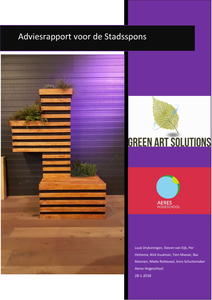Immunofluorescence microscopy in this study shows that GLUT-4 protein expression is fibre-type specific within a muscle. It is postulated that both fibre-type-dependent and fibre-type-independent factors affect GLUT-4 expression.
DOCUMENT

Muscle fiber-type specific expression of UCP3-protein is reported here for the firts time, using immunofluorescence microscopy
DOCUMENT

Om inzicht te krijgen in spierveroudering is genexpressie gemeten in vastus lateralis biopten van jonge en oude mannen en vrouwen. We vonden dat tijdens het ouder worden bij beide geslachten dezelfde categorieën genen in spieren worden aan- en uitgeschakeld (“gereguleerd”); de mate van deze zogenaamde differentiële expressie was echter geslachtsspecifiek. Bij mannen was oxidatieve fosforylering het meest in het oog springende proces, en bij vrouwen was dit celgroei gemedieerd door AKT-signalering. De conclusie is dat dezelfde processen zijn geassocieerd met skeletspierveroudering bij mannen en vrouwen, maar dat de differentiële expressie van die processen geslachtsspecifiek is.
MULTIFILE

Klimaatverandering in combinatie met verstedelijking heeft tot gevolg dat riolering de hevige regenval steeds minder goed aankan, wat voor toenemende overlast zorgt. Om dit tegen te gaan is Eduard van Vliet met behulp van Jeroen Meulenkamp een product, genaamd 'de Stadsspons', aan het ontwikkelen dat in stedelijke omgeving bijdraagt aan waterretentie van hemelwater en daarnaast gezuiverd water aanbiedt aan omwonenden, waarbij het simultaan sociale functies vervult. Dit rapport dient om advies te geven over op welke manieren die functies het beste ingevuld kunnen worden voor de ontwikkeling en het latere gebruik van de Stadsspons.
DOCUMENT

De kweek van vis en de vraag naar visvoer groeit wereldwijd enorm. Voor een verdere duurzame groei is de visvoer industrie op zoek naar alternatieve eiwitbronnen die duurzaam zijn en zo min mogelijk concurreren met bronnen geschikt voor humane consumptie. Eiwit uit zeewier kan in potentie een duurzaam alternatief zijn voor bijvoorbeeld het momenteel veel gebruikte sojameel of vismeel en visolie. ZEEVIVO focust zich in dit deel project op de vervanging van soja en onderzoekt daarom in werkpakket C of eiwit uit zeewier een geschikt alternatief is voor de sojacomponent in visvoer. De activiteiten binnen ZEEVIVO werkpakket C hebben als doel het selecteren en karakteriseren van op zeewier gebaseerde eiwitgrondstoffen voor visvoeders. Als eerste worden alle relevante eisen vastgesteld waaraan het zeewiereiwitconcentraat moet voldoen om gebruikt te kunnen worden door de visvoerindustrie. Vervolgens wordt, door middel van een uitgebreide screening met behulp van in vivo proeven, een selectie gemaakt uit de beschikbare zeewiereiwitconcentraten.
DOCUMENT
